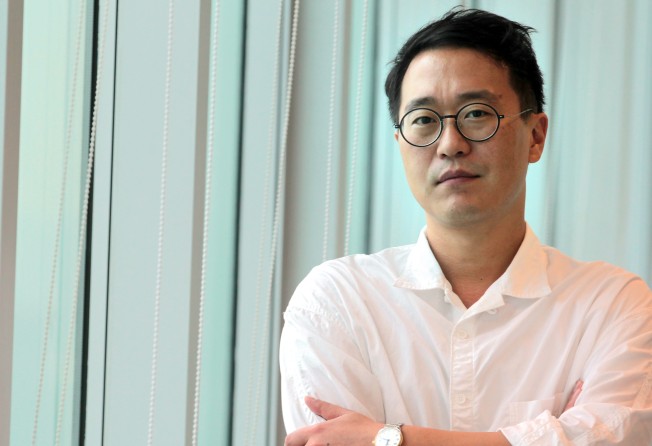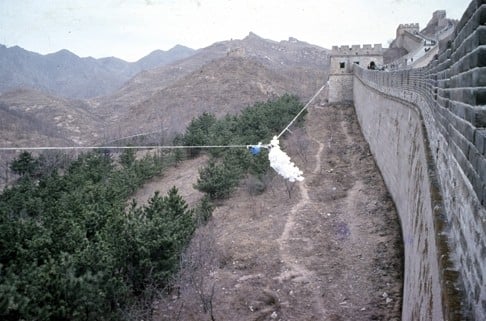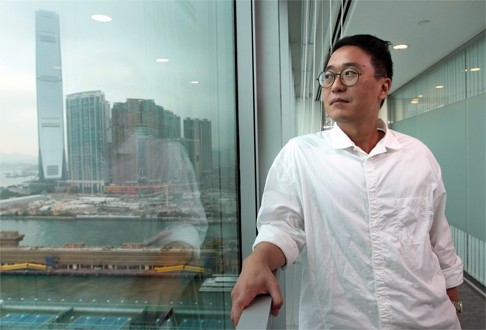
Hong Kong gears up for Mobile M+: Live Art
Unfinished West Kowloon Cultural District site sets the scene for nomadic exhibition

The almanac doesn’t normally feature in the museum curator’s toolkit, but the team at M+ have turned to the traditional farmers’ calendar for help to time an outdoor performance in the upcoming Mobile M+: Live Art.
“Eiko Otake wants to perform in the West Kowloon Cultural District construction site. She also wants to perform around sunset. So we looked up the almanac to find out when it gets dark in the middle of December. We want there to be some light when people leave, out of safety concerns,” says Doryun Chong, chief curator of M+, the future museum of visual culture.
The logistical challenges of putting together a 17-day art event spread across seven different venues are considerable, but this kind of public art programme is necessary to help drum up interest in M+ after long construction delays.
The government hopes that the building, designed by Herzog & de Meuron, will house one of the best museums in the world – although it will not be ready for another four years.
“It is a learning experience for ourselves and the Hong Kong public. It is both capacity building as well as awareness building,” says Chong.
The December Mobile M+ is, technically, the ninth of the museum’s pre-opening series of nomadic exhibitions.

Previous shows had focused on the more avant-garde aspects of the publicly funded museum’s growing collection, such as neon signs, moving images and conceptual installations. But this latest programme, which includes six live performances, seems to stretch the concept of both exhibitions and visual culture.
How can Otake’s dancing, or a staged reading of a Marguerite Duras novella, for example, possibly come into the museum’s orbit and not WKCD’s sizeable performing arts division headed by Louis Yu Kwok-lit?
Chong explains that major museums around the world have been incorporating performances into their collections and programmes since visual artists started to emerge from their studios and used their own body in artworks in the 1960s.
“WKCD will have lots of performing venues but M+ sees crossover opportunities. We are following the history of contemporary art movements which have already blurred boundaries. Artists are no longer just image- or object-makers working alone in the studio. Sometimes they produce something ephemeral by using their own body,” he says.
This thinking requires the breaking down of departmental silos within the now-sizeable organisation, where about 250 people work in 10 different sections.

“I would be exaggerating to say that Mobile M+ has catalysed a revolutionary change in interdepartmental relationships. But it has certainly obliged us to talk to colleagues we don’t often work with,” says Chong.
The performing arts department is going to host one of the Mobile M+ events at its regular “Freespace Happening” in the Nursery Park in WKCD. The project delivery team, made up of stressed engineers struggling to get everything built more quickly, will help facilitate Otake’s performance in the middle of the unfinished site.
Chong didn’t expect the Japanese performer to pick the rather inconvenient venue. “I took her there to give her a sense of what M+ is about and she totally responded to the rawness, the semi-natural aspect of it, and how it is surrounded by the Kowloon and Hong Kong Island skylines,” he says.
Otake is bringing her solo work, A Body in Places, to Hong Kong. In previous versions, she performed in train stations and libraries, always non-theatre spaces with no stage lighting, to a small, intimate audience. The intense interaction between the performer and the venue could mean that her audience in Hong Kong will be following her around in the dying light, though the exact arrangement is yet to be decided.
A video of her A Body in Fukushima project, which shows her performing in the area devastated by the 2011 tsunami, will be shown at Connecting Space in North Point, one of the exhibition venues for the December 4-20 festival.

Connecting Space will also feature a new work by local artist Frog King, who has been asked to create an installation that refers back to his landmark 1979 performances in Beijing.
That year, early in China’s gradual opening up to the world, Frog King (real name Kwok Mang-ho) became the first artist to create public, site-specific installations in the country. His “art happenings”, using humble plastic bags as the main material, were completely incongruous with the solemnity of Tiananmen Square and the Great Wall before the onset of consumerism and mass tourism.
It is a learning experience for ourselves and the Hong Kong public. It is both capacity building as well as awareness building
Another major commission for this Mobile M+ is a new version of South Korean artist Haegue Yang’s The Malady of Death. The artist has an obsession with the book by Duras, which is about a man who pays a woman to spend weeks with him in a seaside town so he can learn about sex. She has arranged for actresses to read the text on stage in a number of countries, in the local language.
Local writer Hon Lai-chu and filmmaker Yau Ching will each give a reading at Sunbeam Theatre using a newly translated, Chinese version of the novella.
One of the most unusual works to be featured next month is John Cage’s Writings through the Essay: On the Duty of Civil Disobedience.
This 1987 work counts as one of few “objects” made by the groundbreaking American composer but in fact, it has little material presence apart from old tapes of distorted voices reading out Henry David Thoreau’s On the Duty of Civil Disobedience, a 19th century book arguing against slavery and American expansionism.
There are also instructions for how theatre lights and chairs need to be installed according to the I-Ching (Book of Changes).
This work, which doesn’t really exist until it’s been installed, has only been shown a couple of times since its debut in the eighth Documenta (1987) exhibition in Kassel, Germany.
“It is quite a leap for us, as curators, since we haven’t seen it. Normally, we don’t want to show anything we haven’t seen. But this doesn’t come to life until it’s been put together. This project expands our idea of live art,” says Chong.
While Cage’s inspiration harked back to 19th century American politics, Chinese artist Lin Yilin’s performance piece will be very much about politics in Hong Kong today.
Called Twenty, Lin’s new work will require the audience to take part in a tug-of-war with a rope woven with pages of the Basic Law.
This work, to be held on December 13 as part of “Freespace Happening”, refers back to two performances he gave in Hong Kong nearly 20 years ago. Drive Shaft (1996) saw him moving cinderblocks inscribed with names of legislators and various government departments through Wan Chai, and in Sharkproof Web (1997), he floated in the middle of the swimming pool in Victoria Park, surrounded by paper printed with sections of the Basic Law.
The Guangdong-born artist, now living in Beijing, has been following Hong Kong politics closely and is keen to reprise what are now considered important milestones in the history of performance art in Hong Kong, Chong says.
Details of Mobile M+: Live Art can be found at westkowloon.hk/en/liveart/. Some events require registration.